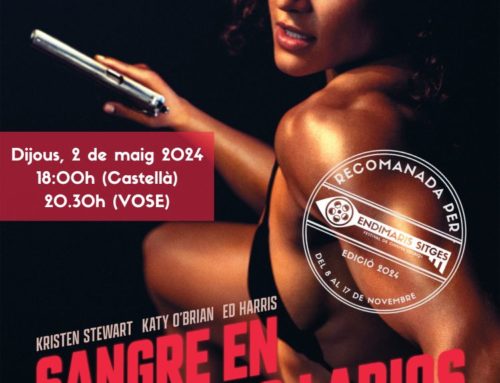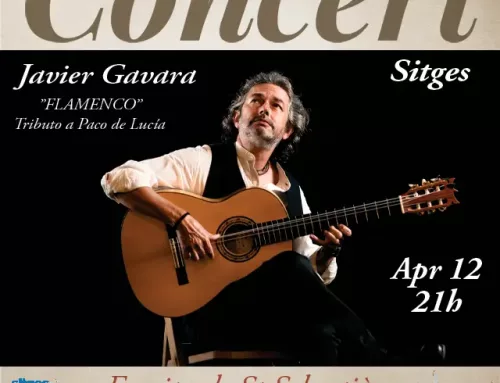To get an idea of who “la Ocaña” was, there is nothing better than going to Wikipedia, which presents him as follows:
José Pérez Ocaña (Cantillana, Seville, 24 March 1947 – 18 September 1983), better known as Ocaña, was a Spanish performer, artist, anarchist, and LGBT activist.
Ocaña, who was an icon of resistance to the Franco dictatorship during the Spanish transition, is one of the key figures forgotten by Spanish art historiography. His performances and diverse actions, contemporary to the birth of the punk movement and the first LGBT protest movements, prefigured the practices of sexual and gender disobedience that would begin to be grouped under the name of ‘queer activism’ in the early 1980s.
He was born in Cantillana, a village in the province of Seville, Andalusia. An acknowledged homosexual and proud to be so, he left his hometown in 1971 due to intolerance and marginalisation, to move to Barcelona, the ideal city to express his art and his transgressive ideas. He declared himself an anarchist (his “performances” during the International Libertarian Days of the CNT in 1977 in Park Güell were historic). He lived in the Plaza Real where he had an altar full of flowers on the balcony with an image of the Virgin of the Assumption (the protagonist of the great festivities of Cantillana on 15 August). He knew artists such as Nazario and Copi. He lived humbly in a flat in Barcelona and worked as a wall painter in order to survive.
Although his art was appreciated by many, he stood out for his way of living, for expressing himself freely without paying attention to the possible consequences in a country still stuck in archaic and dangerous values. He was a typical character of the Ramblas, he dressed up without any concealment in broad daylight with a mixture of Andalusian folklore and the typical religiosity of his land, and he lived surrounded by those who loved and understood him.
In September 1983 he returned to Cantillana to celebrate the Carnival festivities and to join his family. There he made a sun costume out of paper, cloth, and flares, which caught fire and burned him to death. He died in hospital on 18 September 1983, a week after accidentally burning himself.
Ventura Pons dedicated his first documentary film to him in 1978: “Ocaña, Retrato Intermitente“. He himself starred in the film to tell the story of his life. Nazario, a cartoonist and friend of his, paid tribute to him with the comic “Alí Babá y los 40 Maricones“.
Carlos Cano dedicated the song “Romance a Ocaña” to him, which was also recorded by María Dolores Pradera, and María José Magaz Marcos dedicated the book of poems “En Tu recuerdo” (Barcelona, 1984) to him.
Plays have also been dedicated to him, such as “Copi y Ocaña en el Purgatorio“, by Marc Rosich. Those who knew him have no doubt of the relevance of this character. On 25 September 2009, a tribute was paid to him in a heartfelt ceremony in the Plaza Real in Barcelona.
His family owns all his pictorial work, some of which is exhibited in a bar the own. Juan José Moreno and Manuel Huete directed the documentary “Ocaña, La Memoria del Sol” (2009) in which they approached his figure through witnesses, photographs, and unpublished images.
On 26 April 2014, he received the Adriano Antinoo Honorary Award in Seville, one of the most important national awards in the fight for equality in diversity. The speech was read by the Mayoress of Cantillana, Angelines García, and the award was collected by her sister Luisa, the Queen.
Enough of the “cut and paste” from Wikipedia. Now, the story I know and want to tell you is about Ocaña and one of his friends, Jesús Camacho, “La Fuensi”. Like Ocaña, Camacho emigrated to Barcelona fleeing his hometown. Jesús was from Alcantarilla (Murcia, 1945). According to what he told me, when Ocaña arrived in Barcelona he earned his living as a wall painter, but he wanted to be a portrait painter. Little by little Camacho trained him and guided him in his first steps in the world of painting and show business.
I remember him telling me as an anecdote that he told him: “Draw and paint whatever you like“. And Ocaña began to draw his famous virgins, La Divina Pastora, and old men from the Ramblas. Camacho also marvelled at the success he achieved with his walks along the Rambla in Barcelona, dressed as a woman, like a peasant girl, lifting her skirt from time to time to show his ass or his cock and make his friends laugh as they accompanied him in a kind of procession that was shamelessly and provocatively transgressive. It was the seventies, during the Transition, the time of the Destape, and Ocaña perfectly played the role of the cheerful anarchist walking Rambla up, Rambla down.
Camacho set a record, a milestone or challenge by spending 48 hours painting on the Ramblas in Barcelona. The clipping from the Noticiero Universal records this performance in which he appears accompanied by the young Pérez Ocaña:

Nowadays there is a Sisterhood of Beata Ocaña as an association and a Facebook page that compiles his work and his memory. You can see some photographs of his visit to Sitges one Carnival night in February 1975. You can see Ocaña in drag in front of the fishmonger Garre, in Parellades street, below the writing there is the date, the place and a scribbled phrase: “Mandau Caña” (They gave me cane) that could be interpreted in many ways.
We also have documentary evidence, with photographs, that Ocaña visited the Carnival of Vilanova i la Geltrú and this was because in those years after the death of the dictator, the Carnival was lit by the embers of Sitges and Vilanova, the only towns that had preserved the rebellious and transgressive spirit of the festival.
Another photograph shows Ocaña inside a bar or restaurant, and in Sin Street in front of Tito’s bar “fagging” and doing the butterfly, walking up, walking down, entering the Mesón and lifting her skirts to shamelessly show her “tita”.
On those nights in 1977 and 1978 we also find the Chilean photographer Luis Poirot and the poet Enrique Lihn: for three years the photographer Luis Poirot went to Sitges to photograph them, “attracted by the butterflies of ephemeral nocturnal flight”, a time when Enrique Lihn passed by his house, and after seeing the photos he wrote the poems reviewed here. Of these, “Efímera Vulgata” was destined to be published in a book together with Poirot’s images.
Over the years Ocaña has become an attraction, a product, a brand, the name of a restaurant in Plaza Real where he lived very poorly helped by Nazario Luque, the cartoonist and comic artist, who received the full recognition of our association, the Pepito Zamora Award in 2020, deserved for his activism and his vital attitude of struggle and resilience.
We will never know what would have happened if Ocaña had not died in 1983. Evil tongues have spat their venom because they only know how to do this, poison and curse. He died at the age of 36 and his star illuminates us and watches over all of us, the faggots, the sissies, the crazy ones, the transvestites, the “minettes“, the fun-loving mamones and the sad dolls who get off at Sitges station always looking for a bit of air, a bit of sunshine, a bit of fun, a bit of cane. And she also watches over the old heathens and the coolest and most morbid pimps. Somebody say a prayer to him before the Virgen Pastora. But nobody, nobody did, because Ocaña, despite his religious and devout passion, was a dissident and a Mediterranean version of the most exotic punk, with a large dose of love and fun.
Today a pencil drawing by José Pérez (Ocaña) can be bought on the Todocolección website for €990, Virgen Pastora, signed. A price that would correspond to 165,000 pesetas, equivalent to the salary of a bricklayer, a construction worker, for a whole month, if he could see it!
ADDENDA: The Ephemeral Vulgate
As the same photographer who inspired Lihn points out, the transvestites of the Rambla de Sitges take flight at night like butterflies:
In a Sydney neighbourhood on the Sitges Rambla
(when the parents have collected their children).
At midnight when Cinderella loses,
crazily and cunningly loses one of her little slippers
in the hands of the twelve bells
in the Café de l’Opera, in the house of the Carlina
in Christopher Street the Ephemeral Vulgate wakes up
for her nuptial flight
Unfurls, as in the old postcards,
her wings of silk painted with sequins
The eyes are ocelli that gleam
at the touch of light and shimmer languidly.
The Ephemeral Vulgat1
We remind you that the Department of Culture organizes next February 11 at 6:30 p.m. in El Retiro Theater-Salon the show “Ocaña, queen of the Ramblas”. Do you sign up for this cultural outing?
You can buy the ticket at: https://www.4tickets.es/ajuntamentsitges/public/janto/?Nivel=Evento&idEvento=AJ42















